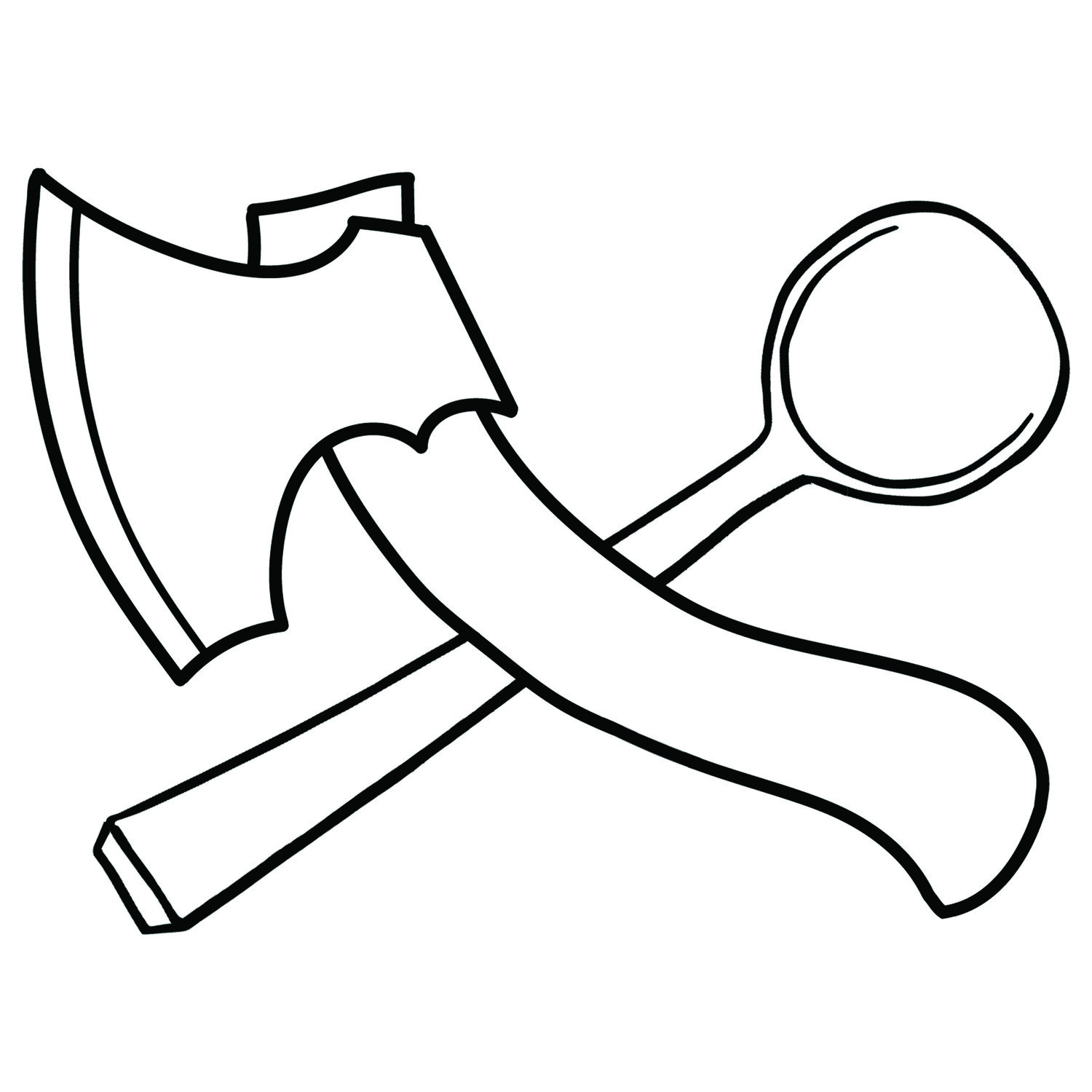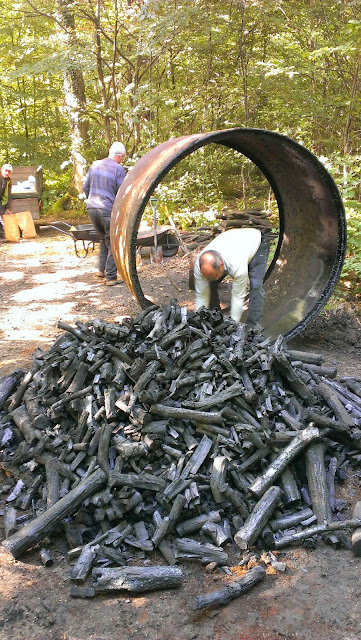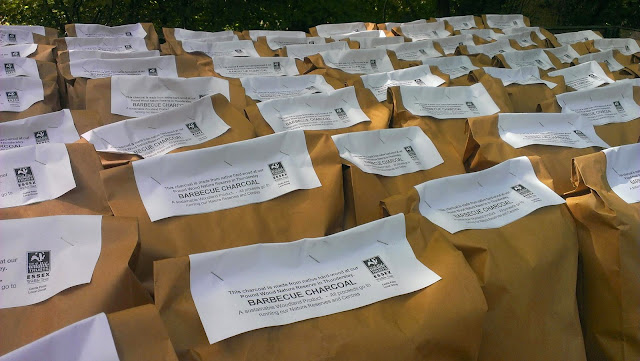Charcoal Marking (part 2)
Last week at the Essex Wildlife Trust's Pound Wood I helped load and light the charcoal kiln. In the evening I went back and switched around the chimneys and vents. On Wednesday morning the kiln was shut down (all the vents blocked off) and it was left to sit for a week.
We opened it up on Tuesday morning and the wood has gone from this:
To this:
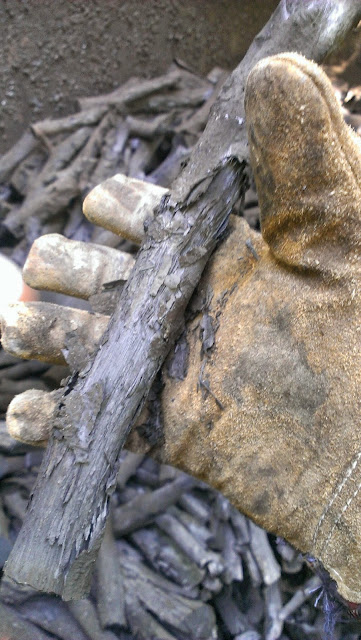 |
| Charcoal I helped produce, from cutting to cooking. |
We opened it up on Tuesday morning and the wood has gone from this:
To this:
We started picking out the charcoal and loading it into bags. I was amazed at how the wood had in one way changed so much, but in other ways, remained remarkably the same. I could tell which branches were silver birch and which were hornbeam.
While bagging the charcoal we had to break up the larger pieces. This was to help fit them in the bags and to make sure they had been turned to charcoal all the way through, and had not just become 'brown ends'. The wood that had fully converted broke easily and the sounds of it had a glass-like quality to it.
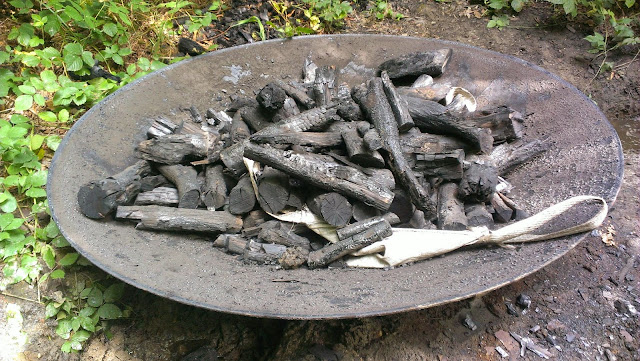 |
| Brown ends set aside in the kiln lid, to be used as fuel for the next burn. |
Once we couldn't easily reach down into the kiln we tipped it over and continued to hand-fill bags. Apparently using shovels left the bags dirty, which customers don't appreciate.
The bags are all filled with the larger pieces, labelled and put on the tractor trailer ready for delivery.
We filled about 70 bags with barbecue charcoal.
Once we'd picked out all the larger pieces, we moved on to sieving out the smallest pieces to fill 'top-up' charcoal bags, which are labelled as having smaller pieces of charcoal in them, intended for "topping up a barbecue at a suitable pause in the cooking"
 |
| The first stage of sieving |
 |
| Pouring the pieces into a funnel to tip into bags |
Once all the remaining charcoal has been through the above mesh, it's sieved twice more, once to collect remaining small 'top-up' pieces, then the remains from the top-ups are sieved to be used as horticultural charcoal. It's all a very efficient process, with nothing from the kiln going to waste.
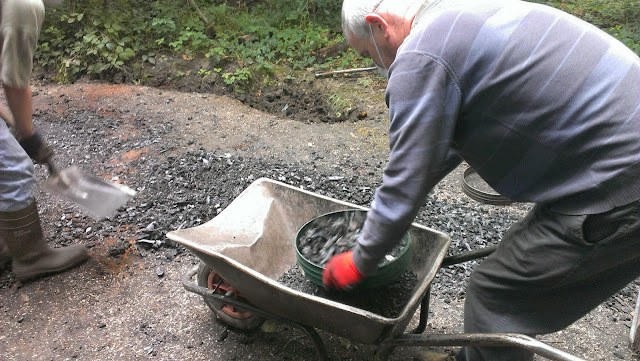 |
| Sieving out the remaining small pieces of charcoal |
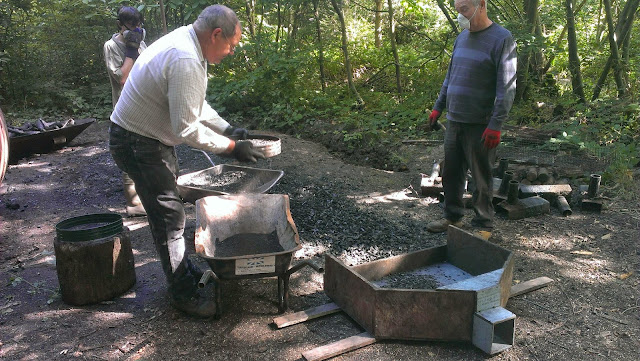 |
| Sieving to separate the horticultural charcoal from the remaining dust and debris. |
